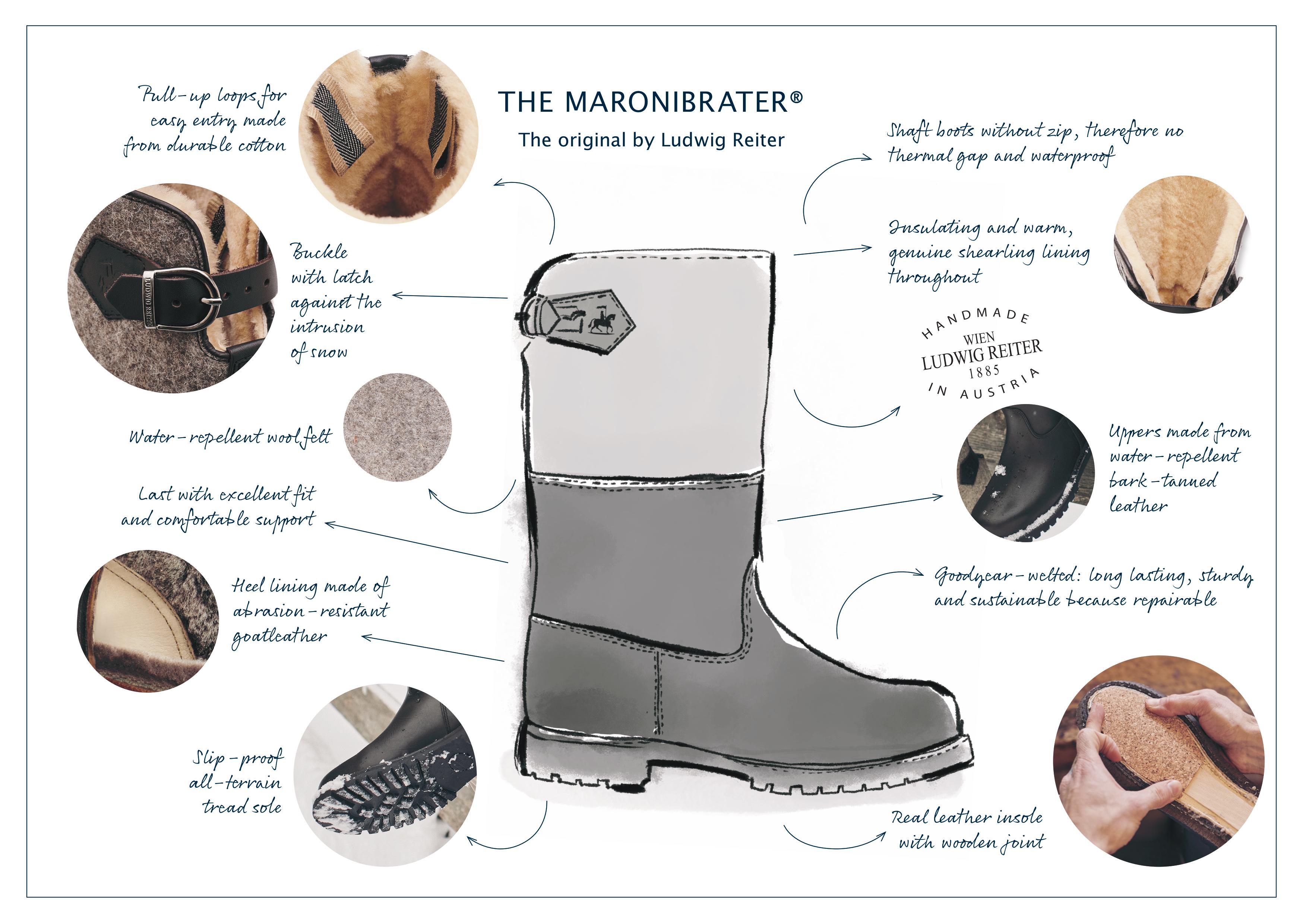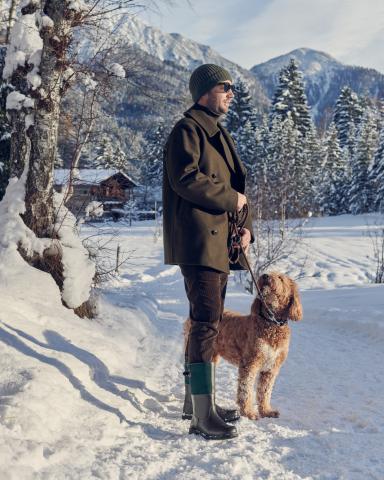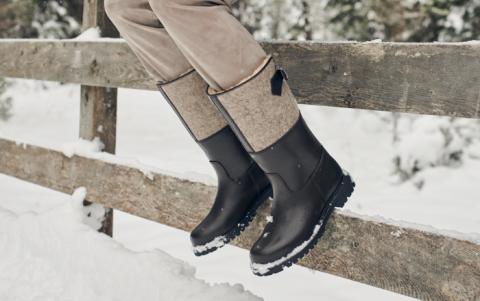
the MARONIBRATER®
The original by ludwig reiter
The Maronibrater is more than just a boot – it’s a product of tradition that combines durability, style, and quality. Perfect for all kinds of winter activities, this nearly indestructible classic accompanies you through snow, cold, and adventure.
The Maronibrater was originally a felt boot with leather trimming for lumberjacks and mountain farmers. As they were ideal for spending the whole day outdoors even in freezing cold weather, they were soon brought to the city by market people. There they became known a hundred years ago as a typical item of clothing for the Maronibrater (engl. chestnut roasters), who were very popular in Vienna in winter. The fact that such an old-fashioned product has become standard equipment for all discerning winter enthusiasts between Kitzbühel and Kampen, Sankt Moritz and Aspen is due to its very traditional qualities, which have been perfected to meet modern demands through a detailed redesign.
Discover many good reasons why the Maronibrater is the king of winter boots:

OUR RECOMMENDATIONS FOR THE BEST CARE
To ensure that you can enjoy them for a long time, we would like to give you a few recommendations here on how to care for your Maronibrater boots:
Upper Leather (Lower Shaft)
The upper leather of the lower shaft is made from high-quality calf leather, which is water-repellent. If it becomes heavily soaked, it should be treated with leather grease. Never dry soaked boots on stoves or heaters, as this can cause the leather to become brittle.
Protection Against Salt Damage
Leather is highly weather-resistant but not immune to aggressive dirt, particularly road salt. To avoid irreversible damage, salt stains must be wiped off immediately with lukewarm soapy water. After drying, the leather should be treated with shoe polish or leather grease.
Scratches and Abrasions
If the boots hit sharp objects or rub against rough surfaces, the upper leather may get damaged. If lighter layers underneath become visible, there is no need for concern—these can be covered again using shoe polish.
Upper Shaft Materials
The upper shaft is made of suede, wool felt, or tweed. For heavy soiling, allow the material to dry and then brush it off. Water resistance can be improved with an impregnating spray. Wool felt is naturally very weather-resistant but, like tweed, should be protected from moths when stored. Pony hair may develop bald spots due to abrasion, particularly on the inner sides.
Shearling Lining
The boots are fully lined with genuine lambskin, which only insulates effectively when not overly compressed. Please avoid selecting a size that is too small. Wet or sweaty lambskin loses its insulating properties and wears out faster, so ensure it is well-ventilated.
Fit and Entry
The boot shaft does not have laces for tightening. To prevent slipping while walking, the instep area must fit snugly. This can make putting the boots on somewhat difficult, especially when they are new.
Use the pull straps located on the inner side of the upper shaft when putting on the boots. These are securely attached to the lower shaft and can withstand strong pulling. Do not pull on the upper leather, as it may tear.
Removing the Boots
Please use a boot jack when taking the boots off to preserve the integrated heel counter. Avoid pulling the boots off over a hard edge, such as a step, as this can damage the heel counter.
Construction and Sole Replacement
Maronibrater boots are constructed using either a Goodyear-welted or double-stitched method, making them durable yet comfortable. If the sole becomes worn, it can be fully replaced by a professional cobbler.
By following these care instructions, your new boots will provide you with long-lasting enjoyment.






